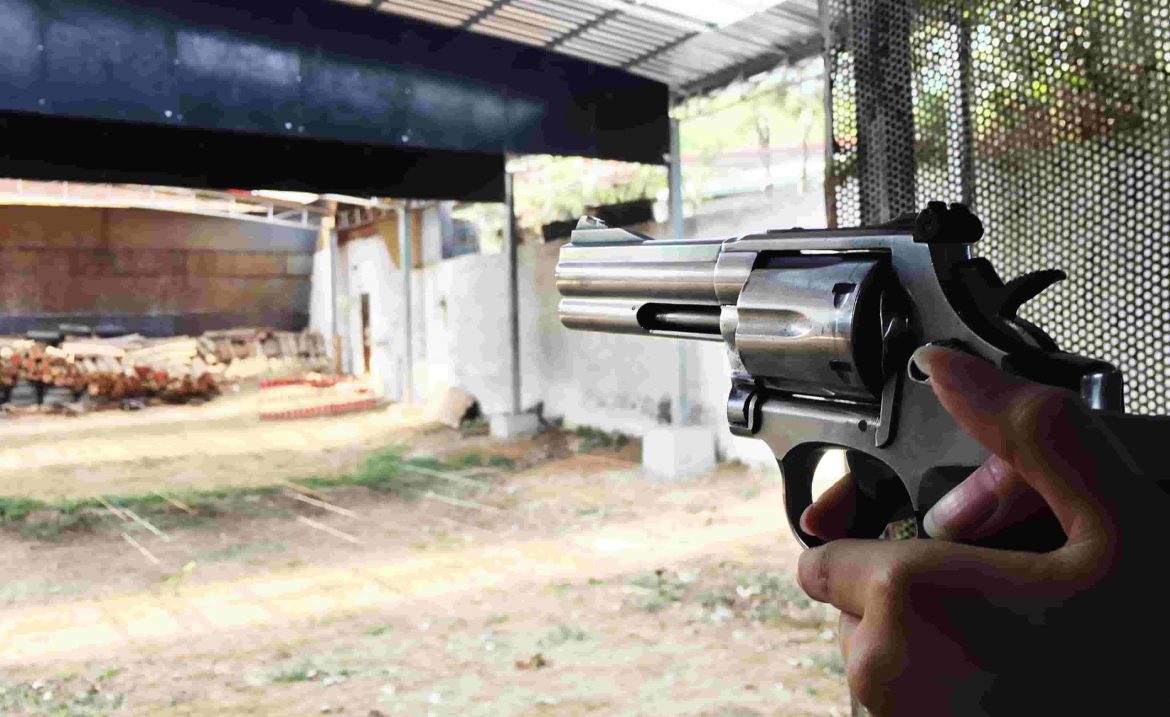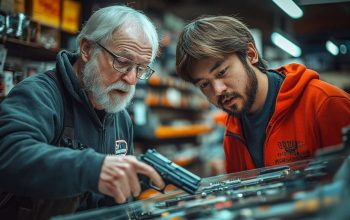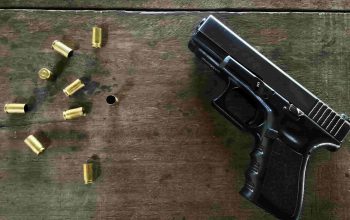Firearm safety is a crucial skill for everyone—from enthusiasts to first-time gun owners. Whether you’re an outdoor enthusiast who enjoys hunting or someone interested in self-defense, understanding the principles of safe firearm handling ensures not only your safety but also the safety of those around you. This guide aims to equip you with the essential knowledge needed to handle firearms responsibly.
The Significance of Safety in Firearm Handling
With over 400 million firearms in circulation in the United States alone, the importance of safety cannot be overstated. Accidental shootings and mishandlings are preventable with proper education and practices. This guide will help you grasp the significance of firearm safety, teaching you to appreciate the responsibility that comes with gun ownership.
Understanding the potential dangers associated with firearms is fundamental. Guns are powerful tools, capable of causing harm or even taking a life if handled improperly. By prioritizing safety, you reduce risks and ensure that firearms serve their intended purpose without unwanted incidents.
Communities with strong firearm safety cultures experience fewer accidents. Through education and responsible practices, firearm enthusiasts can contribute to a safer society. This guide serves as your starting point in fostering a responsible attitude towards firearm usage.
The Basics of Firearms and Their Components
Before handling any firearm, it’s crucial to understand its components. Firearms come in various types, each with unique parts that serve specific functions. From rifles to shotguns and handguns, knowing your firearm’s anatomy is the first step to mastering its operation.
Rifles, known for their long barrels and precision, typically include the barrel, stock, trigger, magazine, and sights. Each part plays a critical role in accuracy and handling, making it essential to familiarize yourself with these components before use.
Shotguns, often used for sport shooting and hunting, share similar components with rifles but differ in their operation and ammunition type. Understanding these distinctions ensures the correct handling technique for each firearm type, enhancing both safety and performance.
Handguns, with their compact size, are popular for personal protection. Key components include the barrel, slide, trigger, magazine, and safety mechanisms. Knowing how each part functions is vital for safe and effective use, especially in high-stakes situations.
Essential Firearm Safety Rules for Every Gun Owner
Firearm safety begins with a set of principles that every gun owner must know. These rules, endorsed by organizations like the NRA and firearm instructors, form the foundation for responsible gun ownership.
First and foremost, always treat every firearm as if it is loaded. This mindset prevents accidental discharges and encourages careful handling. Even if you believe a gun is unloaded, treat it with the same caution as a loaded one.
Second, never point a firearm at anything you do not intend to shoot. This rule reinforces the importance of muzzle awareness, ensuring that guns are only directed at safe targets or downrange areas during use.
Finally, keep your finger off the trigger until ready to shoot. This prevents accidental discharges caused by involuntary actions, such as tripping or sudden movements. Maintaining trigger discipline is a key component of firearm safety.
Proper Firearm Handling Techniques for Beginners
Mastering the handling of firearms is essential for safety and proficiency. Beginners should start with basic techniques that promote control, accuracy, and safety during use.
The grip is the foundation of firearm control. A firm and consistent grip ensures stability and reduces recoil impact, improving accuracy. Practice holding the firearm with both hands, keeping the dominant hand on the grip and the support hand providing additional stability.
Stance also plays a critical role in firearm handling. A balanced and stable stance enhances control and accuracy. Position your feet shoulder-width apart, lean slightly forward, and maintain a relaxed posture. This helps absorb recoil and maintain aim on your target.
Finally, practice sight alignment and trigger control. Align the front and rear sights on your target, and apply smooth, even pressure on the trigger. This minimizes movement during firing, improving accuracy and consistency with each shot.
Storing Firearms Safely: Best Practices and Tips
Proper storage of firearms is a non-negotiable aspect of responsible gun ownership. Secure storage prevents unauthorized access, especially by children or individuals unfamiliar with firearms.
Use gun safes or lockboxes to store firearms when not in use. These secure containers prevent access by unauthorized individuals, reducing the risk of accidental discharge or theft. Invest in high-quality storage solutions to ensure peace of mind.
Additionally, consider using trigger locks or cable locks as an added layer of security. These devices render firearms inoperable, providing an extra precaution against accidental discharge.
Educate household members, particularly children, about firearm safety and the importance of never handling guns without supervision. Open communication and education foster a safety-conscious environment within the home.
The Importance of Regular Maintenance and Inspection
Like any other tool, firearms require regular maintenance and inspection to ensure their safe and effective operation. Neglecting maintenance can lead to malfunctions, increasing the risk of accidents.
Regularly clean your firearms to remove residue and debris that accumulate during use. This prevents build-up that can affect performance and reliability. Follow the manufacturer’s guidelines for cleaning frequency and methods specific to your firearm type.
Inspect your firearms regularly for signs of wear or damage. Check for loose parts, cracks, or other irregularities that could compromise safety. Address any issues promptly to maintain the firearm’s integrity and functionality.
Engage in periodic professional inspections by a qualified gunsmith. Their expertise ensures that your firearms remain in optimal condition, identifying potential issues before they become safety hazards.
Additional Safety Measures for Families and Communities
Safety goes beyond individual responsibility—families and communities play a vital role in promoting a culture of safety. Implement additional measures to safeguard those around you.
Consider taking a firearms safety course as a family. These courses provide comprehensive education on safe handling practices and create a shared understanding of responsible gun ownership within the household.
Participate in community events focused on firearm safety and education. Engaging with local law enforcement and safety organizations fosters a culture of awareness and responsibility within your community.
Advocate for responsible gun ownership through open dialogue and education. Share your knowledge with others and encourage them to prioritize safety in their firearm practices. Your efforts contribute to a safer environment for all.
Resources for Further Education on Firearm Safety
Continuous education is vital for staying informed about best practices in firearm safety. Numerous resources are available to expand your knowledge and skills.
Enroll in courses offered by organizations like the National Rifle Association (NRA) or local shooting clubs. These courses cover a range of topics, from basic handling to advanced techniques, ensuring comprehensive education for all skill levels.
Access online resources, such as instructional videos, articles, and forums dedicated to firearm safety. These platforms provide valuable insights and tips from industry experts and fellow enthusiasts.
Consider joining a shooting range or club to practice your skills in a controlled environment. Regular practice reinforces safe handling techniques and boosts confidence in your abilities.
Responsible Gun Ownership and Empowerment
In conclusion, responsible gun ownership is both a privilege and a responsibility. By prioritizing safety and education, you empower yourself and others to enjoy firearms responsibly and confidently.
Remember that safety is an ongoing commitment. Continuously educate yourself, practice safe handling techniques, and advocate for responsible gun ownership within your community.
For further resources and education on firearm safety, explore the organizations and courses mentioned in this guide. Equip yourself with the knowledge needed to become a responsible and informed firearm owner.



